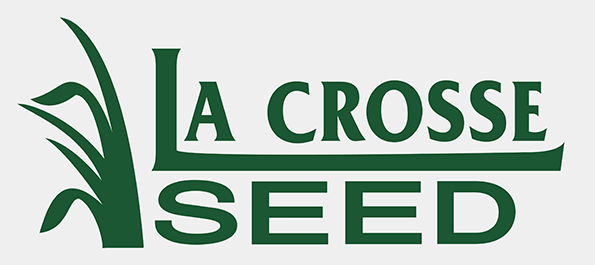Seed categories and product pages can be accessed from this menu:
La Crosse Seed Product Tech Sheets
For general Information regarding this species, scroll below the list of tech sheet links.
General Information Concerning Forage Legumes
Characteristics
Our Forage First® brand forage legumes include red clover, intermediate, ladino and alsike clover, and birdsfoot trefoil. Our forage legume family offers improved and elite varieties known for rapid growth, high forage quality, winter hardiness, disease resistance and more. Many of these legumes form foundations to our premium Forage First® pasture mixes.
Red Clover
Establishment: Fast
Persistence: Low
Drought Tolerance: Medium Low
Winter Hardiness: Medium High
Palatability: Medium
Yield Potential: High
Grazing Tolerance: Medium
Seeding
Alone (lbs./acre): 8-12
Mixes (lbs./acre): 6-8
Seeds/lb.: 272,000
Depth (In.): 1/4-1/2
Planting Time:
Feb.-May; Aug.-Oct.
Emergence (days): 7
Life Cycle: Perennial
Soil pH: 6.0
Management:
Graze or cut for hay when red clover is 1/4-1/2 in. bloom. A second cutting or successive grazings should occur when red clover is 1/4 in. bloom. Leave at least 2-3 in. of growth after each harvest. Care should be taken to eliminate or reduce bloating of livestock when grazing. Keep lime and fertilizers (phosphorus and potash) at proper level.
Intermediate/Ladino
Establishment: Fast
Persistence: Medium
Drought Tolerance: Medium Low
Winter Hardiness: Medium High
Palatability: Medium High
Yield Potential: High
Grazing Tolerance: Medium
Seeding Rate:
Alone (lbs./acre): 4-6
Mixes (lbs./acre): 2-4
Seeds/lb.: 768,000
Depth (In.): 1/8-1/4
Planting Time:
Mar.-May; Aug.-Oct.
Emergence (days): 7-10
Life Cycle: Perennial
Soil pH: 6.0-6.5
Management:
Management for forage is aimed at maintaining 40-50% clover. Close grazing (2 in. stubble) favors clover, whereas light grazing favors grass. Well-fertilized grass will outgrow clover in fall and winter and may smother clover. Spring nitrogen applications will stimulate grass and provide early feed, but excessive rates are detrimental to clover stand. Phosphate applications are broadcast in fall or spring according to soil tests. Sulfur, boron or magnesium may be needed for maximum production on some soils in western part of clover’s range.
Alsike
Establishment: Fast
Persistence: Medium
Drought Tolerance: Low
Winter Hardiness: High
Palatability: High
Yield Potential: High
Grazing Tolerance: High
Seeding Rate:
Alone (lbs./acre): 6-8
Mixes (lbs./acre): 2-4
Seeds/lb.: 728,000
Depth (In.): 1/4-1/2
Planting Time:
Mar.-May; Aug.-Oct.
Emergence (days): 7
Life Cycle: Perennial
Soil pH: 6.0-6.5
Management:
Management for forage is aimed at maintaining 40-50% clover. Close grazing (2 in. stubble) favors clover, whereas light grazing favors grass. Well-fertilized grass will outgrow clover in fall and winter and may smother clover. Spring nitrogen applications will stimulate grass and provide early feed, but excessive rates are detrimental to clover stand. Phosphate applications are broadcast in fall or spring according to soil tests. Sulfur, boron or magnesium may be needed for maximum production on some soils in western part of clover’s range.
Birdsfoot Trefoil
Establishment: Slow
Persistence: High
Drought Tolerance: High
Winter Hardiness: High
Palatability: High
Yield Potential: Medium
Grazing Tolerance: High
Seeding Rate:
Alone (lbs./acre): 8-10
Mixes (lbs./acre): 4-5
Seeds/lb.: 370,000
Depth (In.): 1/4
Planting Time:
Mar.-May; Aug.-Oct.
Emergence (days): 7
Life Cycle: Perennial
Soil pH: 6.0-6.5
Management:
When harvested for hay, first cutting should be taken at 1/10 bloom with second cutting mid-late Aug. To maintain birdsfoot trefoil stand, use management system providing sufficient regrowth between cuttings, allowing plant to reseed itself.
Heavy grazing may be needed in spring to reduce growth but close continuous grazing is not recommended since summer regrowth depends on energy supplied by top growth, not root reserves like alfalfa. Leave 3-4 in. of top growth when grazing. Avoid haying or grazing between Sept. 1 and first killing frost so root reserves accumulate for better winter survival and spring growth. Birdsfoot Trefoil is well suited for stockpiling since it maintains its leaves at maturity and after frosts. It responds to proper fertility management which should be determined by soil testing.





